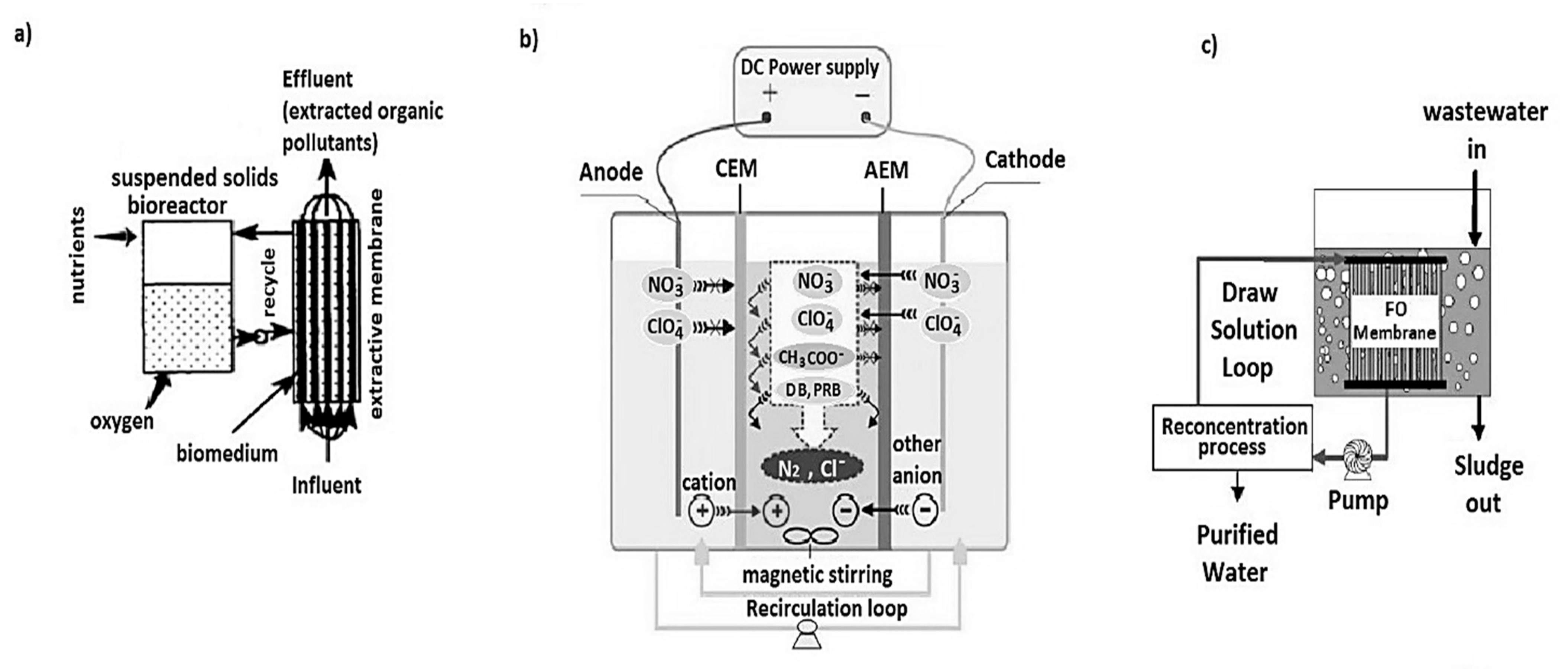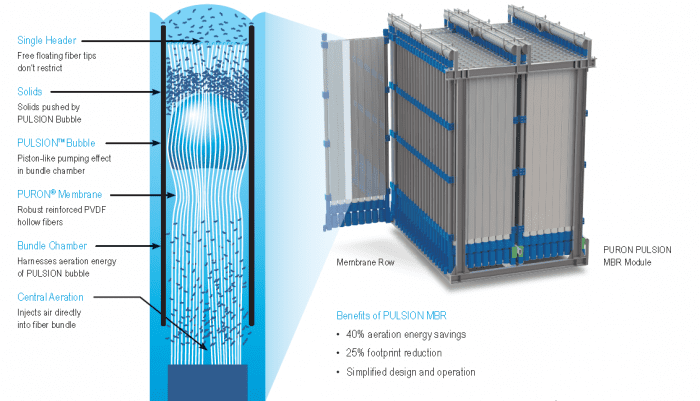The Science Behind Membrane Bioreactor: How It Works and Why It’s Effective
The Science Behind Membrane Bioreactor: How It Works and Why It’s Effective
Blog Article
The Advantages of Membrane Bioreactors in Lasting Wastewater Monitoring
Membrane bioreactors (MBRs) represent a critical advancement in lasting wastewater administration, efficiently combining organic therapy with innovative membrane filtration modern technology. As the demand for sustainable options heightens, checking out the complex advantages of MBRs might expose unforeseen ramifications for the future of wastewater therapy systems.
Overview of Membrane Layer Bioreactors
Membrane bioreactors (MBRs) stand for a considerable improvement in wastewater treatment modern technology, integrating biological deterioration with membrane layer filtration to enhance the efficiency of the therapy process. This cutting-edge system combines the benefits of conventional turned on sludge procedures with membrane innovation, permitting boosted solid-liquid separation. MBRs use semi-permeable membranes to separate cured water from biomass, resulting in premium effluent that can be reused or securely released right into the environment.
The operational design of MBRs usually involves a bioreactor where bacteria break down organic matter, adhered to by a membrane unit that filters the mixed alcohol. This setup not only minimizes the impact of the therapy center yet additionally permits higher biomass focus and decreased hydraulic retention times. Furthermore, MBRs are capable of dealing with a bigger variety of impurities, including pathogens and nutrients, making them appropriate for various applications, from local wastewater treatment to industrial effluent processing.
The integration of MBRs into wastewater monitoring systems is a sign of an expanding pattern in the direction of efficient and sustainable techniques in ecological design. Their capability to produce top notch effluent while lessening area demands positions MBR modern technology as a key gamer in modern-day wastewater treatment services.
Boosted Effluent Top Quality

The membrane layer filtration procedure functions as a physical obstacle, making it possible for the retention of microorganisms and particle issue, which contributes to a clearer and cleaner effluent (Membrane Bioreactor). Furthermore, MBRs run at higher biomass focus than traditional turned on sludge systems, advertising more reliable biodegradation of contaminants. This causes a reduction in biochemical oxygen demand (FIGURE) and overall put on hold solids (TSS) levels in the last effluent
Additionally, MBRs demonstrate excellent performance in dealing with difficult wastewater make-ups, such as industrial effluents and wastewater with high nutrient tons. As an outcome, the effluent produced is usually of better, permitting more flexible disposal alternatives and decreased ecological impact. Eventually, the boosted effluent top quality achieved with MBR modern technology underscores its important duty in advancing lasting wastewater monitoring methods.
Water Reuse Opportunities
The high-grade effluent created by membrane layer bioreactors (MBRs) opens considerable opportunities for water reuse in different applications. MBRs successfully eliminate impurities, consisting of microorganisms, suspended solids, and raw material, leading to cured water that fulfills or exceeds regulatory requirements for reuse. This quality permits for the execution of water reusing efforts across diverse sectors.
One noticeable application remains in farming, where treated wastewater can be made use of for watering, promoting lasting farming techniques while saving fresh water resources. Additionally, MBR-treated effluent can be made use of for industrial processes such as air conditioning, cleaning, and as a procedure water source, substantially decreasing the demand for potable water in these procedures.
In city environments, MBRs promote using reclaimed water for landscape watering, commode flushing, and various other non-potable uses, adding to the total strength of water systems. The integration of MBR technology in decentralized systems help in handling localized water needs, specifically in water-scarce regions.
Reduced Ecological Effect
Exactly how can the adoption of membrane bioreactors (MBRs) contribute to a lowered ecological impact in wastewater monitoring? MBRs dramatically boost the therapy efficiency of wastewater while decreasing environmental disruptions. By integrating organic treatment procedures with membrane filtration, MBRs properly get rid of a large range of toxins, including raw material, nutrients, and pathogens. This innovative purification brings about higher-quality effluent, which is vital for have a peek at this website safeguarding aquatic ecological communities and minimizing the burden on natural water bodies.
Furthermore, MBRs run at reduced hydraulic retention times compared to traditional systems, resulting in smaller sized therapy plant footprints. This small style reduces land usage, thereby maintaining natural environments and biodiversity. The procedure additionally generates less sludge than standard approaches, mitigating disposal difficulties and lowering greenhouse gas emissions connected with sludge monitoring.
Additionally, MBRs facilitate the healing of valuable resources, such as water and nutrients, contributing to a circular economic climate. By making it possible for water reuse for irrigation or industrial processes, MBRs aid relieve freshwater scarcity, therefore promoting sustainable water make use of techniques. Eventually, the fostering of MBR modern technology stands for a substantial stride in the direction of minimizing the ecological effect of wastewater administration systems.
Financial Advantages of MBRs

Additionally, MBRs facilitate the production of premium effluent, which can be reused for various applications, such as farming watering and industrial procedures - Membrane Bioreactor. This reuse ability can substantially reduce water procurement prices, giving an economic check my reference motivation for markets dealing with stringent water regulations
The portable style of MBR systems likewise causes minimized land demands, which is specifically beneficial in city locations where property is pricey. By decreasing area, industries and districts can save money on land acquisition and upkeep costs.
Additionally, MBRs typically require much less frequent upkeep and have a longer life expectancy than standard systems, even more contributing to set you back savings. In summary, the financial advantages of MBRs-- ranging from reduced functional expenses to land cost savings and effluent reuse-- make them a compelling selection for lasting wastewater administration, offering both long-lasting and immediate monetary advantages.
Conclusion
Membrane bioreactors stand for a transformative approach to sustainable wastewater administration, integrating organic treatment with sophisticated membrane layer filtration for superior effluent quality. Their capability for reliable impurity removal helps with water reuse, consequently conserving important freshwater sources. In addition, MBRs add to reduced environmental impacts with portable layouts and reduced sludge generation. read the full info here Economic benefits further enhance their practicality, making MBRs an encouraging remedy for addressing the challenges of wastewater treatment and promoting sustainable resource administration.
Membrane layer bioreactors (MBRs) represent a critical development in lasting wastewater monitoring, properly combining biological therapy with innovative membrane layer purification technology.Membrane bioreactors (MBRs) represent a considerable innovation in wastewater therapy innovation, integrating organic deterioration with membrane layer filtering to enhance the efficiency of the therapy process.Attaining improved effluent top quality is one of the most considerable advantages of making use of membrane bioreactors (MBRs) in wastewater therapy.Furthermore, MBRs demonstrate outstanding efficiency in treating tough wastewater structures, such as industrial effluents and wastewater with high nutrient tons.Incorporating membrane bioreactors (MBRs) right into wastewater management not just decreases ecological effect however additionally provides substantial economic benefits.
Report this page